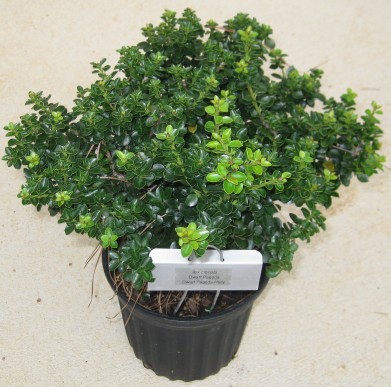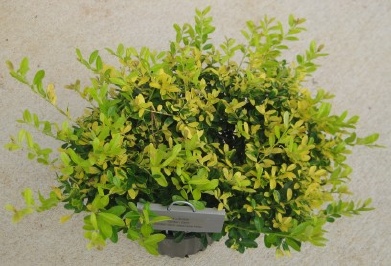Japanese Holly


There are many different species of Holly and they don't all have prickly leaves. In fact there are around 600 species in the genus Ilex which is the only living genus in the family Aquifoliaceae.
The two plants I brought with me today are both from the species Ilex crenata commonly known as Japanese Holly or Box-leaved Holly. There are numerous cultivars listed in the species and around 60 that are actually available for purchase. The most common ones are 'Helleri', 'Soft Touch' and 'Sky Pencil'.
One of the reasons that they are commonly known as Box-leaved Holly is that the leaves do indeed resemble the leaves of Boxwood from the genus Buxus. So how do we tell them apart? The most foolproof way is to look at the leaf arrangement. Hollies will have an alternate leaf arrangement which means that there is a single leaf at each node, with the leaves being spaced along the stem in a spiral pattern. Boxwood however, has opposite leaves, which means that they are found in pairs at each node, opposite one another. Other characteristics of Japanese Holly include green stems for the current year's growth and dark green leaves dotted with blackish glands on the underside.
So what about the two plants I brought today? I got them at the Nurseries Caroliniana sale. One is the cultivar 'Dwarf Pagoda' and the other is 'Golden Gem.' I think you can tell which is which very easily.
Many Japanese Hollies are used for Bonsai, but Dwarf Pagoda is particularly good with its naturally heavy foliage and unusual form. Under normal conditions it will grow 2" per year, reaching a height of 2 to 3'. It was selected from a holly breeding program at Rutgers University in 1972 and is from a cross between the cultivars 'Mariesii' and 'John Nosal'.
Golden Gem is grown for its golden color, and it needs plenty of sun to maintain that colour. It has a low spreading form. Nurseries Caroliniana listed it as growing to 3 to 4' tall and wide. Dirr does not give a size, but likens it to another cultivar, 'Convexa'. Under the information for Convexa he describes "a 40-year-old plant somewhat vase-shaped in habit is 9' tall and 24' wide." Fortunately he also notes that it can take pruning for hedging!
And on the subject of Dirr, the 6th edition of his "Manual of Woody Landscape Plants" has just been released. For those of you who don't know him, Michael Dirr is a recently retired professor of horticulture at UGA. The Manual of Woody Landscape Plants is the bible of shrubs and trees. I had the 5th edition which came out in 1998. It was becoming dated, primarily because of new cultivars that have been released. The 6th edition takes care of all that. I have been eagerly awaiting its publication for 2 years and am happy to say I finally received my copy last week.
